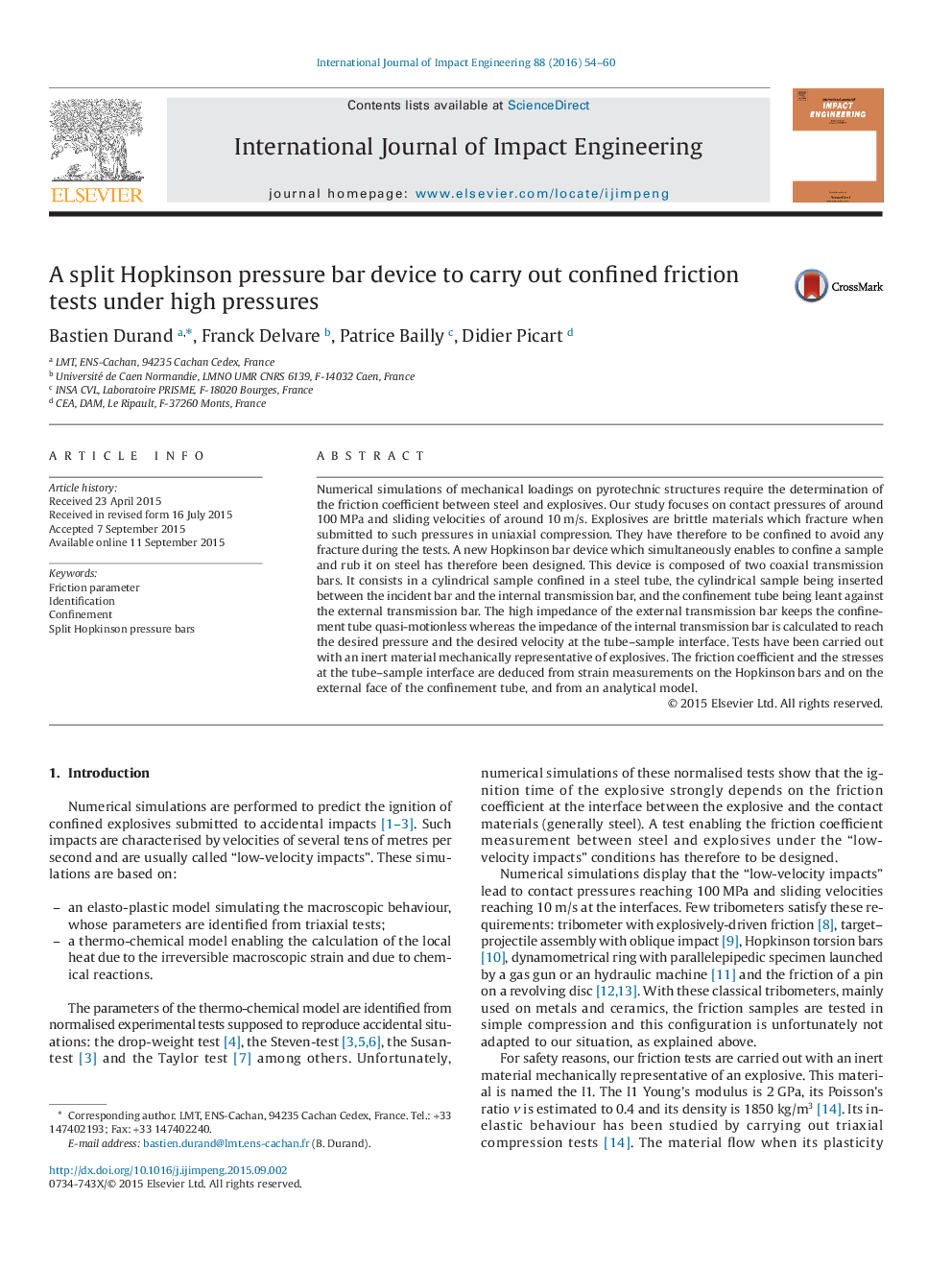| Article ID | Journal | Published Year | Pages | File Type |
|---|---|---|---|---|
| 779123 | International Journal of Impact Engineering | 2016 | 7 Pages |
Numerical simulations of mechanical loadings on pyrotechnic structures require the determination of the friction coefficient between steel and explosives. Our study focuses on contact pressures of around 100 MPa and sliding velocities of around 10 m/s. Explosives are brittle materials which fracture when submitted to such pressures in uniaxial compression. They have therefore to be confined to avoid any fracture during the tests. A new Hopkinson bar device which simultaneously enables to confine a sample and rub it on steel has therefore been designed. This device is composed of two coaxial transmission bars. It consists in a cylindrical sample confined in a steel tube, the cylindrical sample being inserted between the incident bar and the internal transmission bar, and the confinement tube being leant against the external transmission bar. The high impedance of the external transmission bar keeps the confinement tube quasi-motionless whereas the impedance of the internal transmission bar is calculated to reach the desired pressure and the desired velocity at the tube–sample interface. Tests have been carried out with an inert material mechanically representative of explosives. The friction coefficient and the stresses at the tube–sample interface are deduced from strain measurements on the Hopkinson bars and on the external face of the confinement tube, and from an analytical model.
